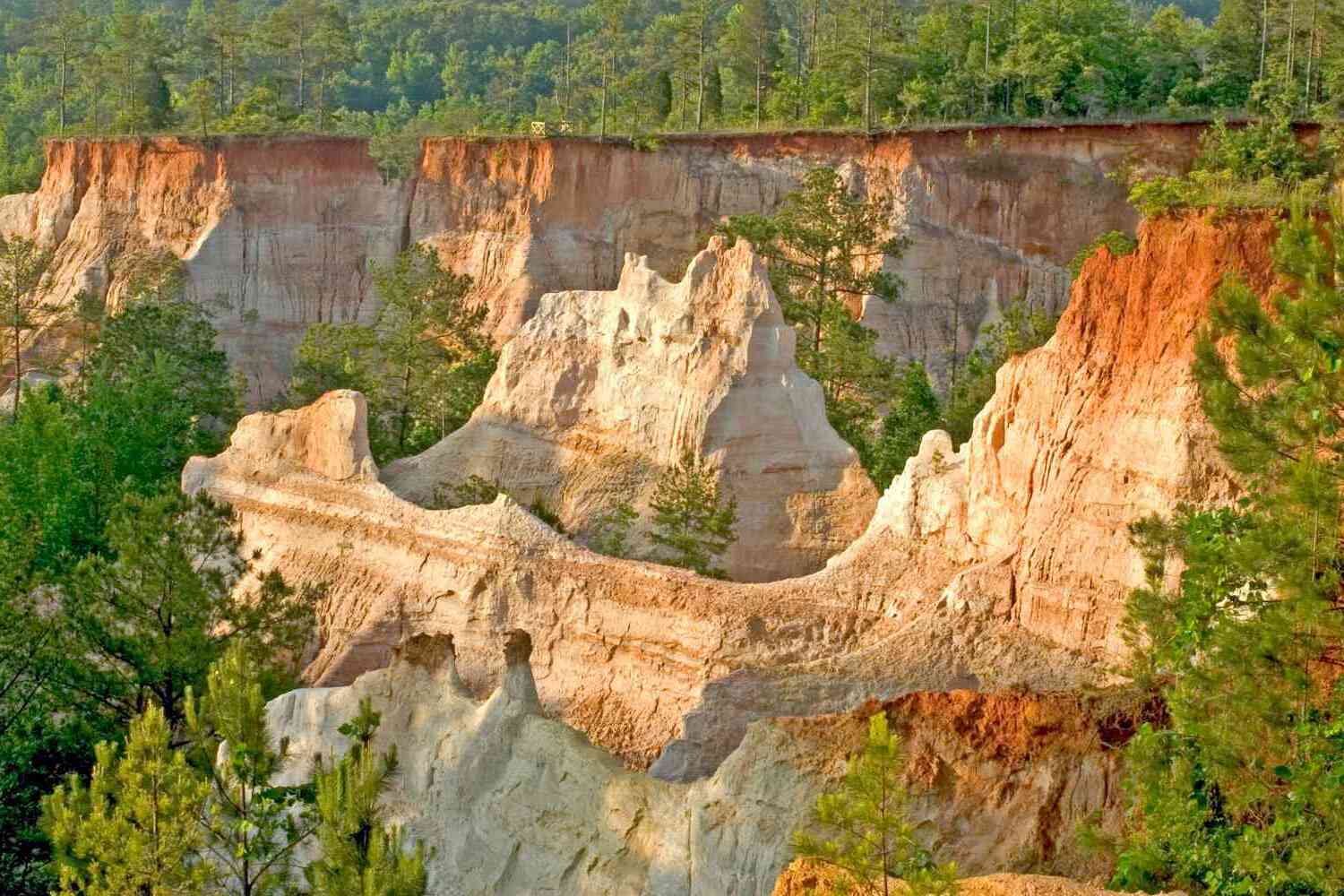
Ever wondered about the Grand Canyon of the South? Yep, you guessed it – I'm talking about Providence Canyon, a marvel tucked away in Georgia that's bursting with beauty and history. Providence Canyon isn't just a pretty face; it's a testament to the power of nature and, ironically, a bit of human error. With its stunning colorful layers of soil and deep gorges, this place is a photographer's dream and a hiker's paradise. But how much do you really know about it? From its accidental creation to its unique ecosystem, Providence Canyon is full of surprises. Ready to have your mind blown with some fascinating facts about this natural wonder? Let's dive into the world of Providence Canyon and uncover its secrets together.
What is Providence Canyon?
Providence Canyon, often referred to as "Georgia's Little Grand Canyon," is a testament to the unexpected beauty that can arise from simple mistakes. This stunning natural wonder was not formed over millions of years by the slow and steady work of a river cutting through rock. Instead, it's the result of poor farming practices in the 1800s, which led to severe erosion. Today, it stands as a vibrant display of deep gullies and colorful canyon walls, attracting visitors from all over to marvel at its beauty.
-
Providence Canyon is located in the southwestern part of Georgia, USA.
-
Despite its grand appearance, the canyon is relatively young, having been formed in the 19th century.
The Formation of Providence Canyon
Understanding how Providence Canyon came to be is a fascinating story of human impact on the environment. In the 1800s, settlers in the area cleared large tracts of native forest for agriculture without understanding the land's susceptibility to erosion. The soil, once exposed, was easily washed away by rainwater, creating the initial gullies that would eventually become the canyons we see today.
-
The primary cause of the canyon's formation was poor agricultural practices.
-
Over time, these gullies deepened and widened into the massive canyons, some of which are over 150 feet deep.
The Colorful Walls of Providence Canyon
One of the most striking features of Providence Canyon is its colorful canyon walls. The walls display a variety of hues, from deep reds and oranges to soft pinks and purples, created by the different types of soil and minerals exposed by erosion.
-
The colors in the canyon walls are due to the presence of iron oxides, which give the soil its red color, and other minerals that provide additional colors.
-
There are more than 40 different shades of color visible in the canyon walls.
Flora and Fauna of Providence Canyon
Despite its origins as a result of environmental degradation, Providence Canyon is now home to a diverse range of plant and animal life. The area has become a unique ecosystem, with several species adapting to the canyon's unique environment.
-
Rare species of plumleaf azalea, which blooms in late summer, can be found in the canyon, making it one of the few places where this plant is found.
-
The canyon supports a variety of wildlife, including foxes, deer, and numerous bird species, making it a great spot for nature enthusiasts.
Hiking and Exploration
For those looking to explore Providence Canyon, there are several hiking trails that wind through the canyon floor and along the rim, offering spectacular views of the canyons and the surrounding landscape.
-
There are over 10 miles of hiking trails available for visitors, ranging from easy walks to more challenging hikes.
-
One of the most popular trails is the Canyon Loop Trail, a 2.5-mile journey that offers up-close views of the canyon's colorful walls.
Preservation Efforts
Given its unique geological and ecological significance, efforts have been made to preserve Providence Canyon and educate the public about the importance of sustainable land use practices.
-
The canyon is now a protected state park, known as Providence Canyon State Outdoor Recreation Area.
-
Educational programs and guided tours are available to help visitors understand the canyon's history and the importance of conservation.
-
Ongoing conservation efforts focus on preventing further erosion and protecting the area's natural beauty for future generations.
Visiting Providence Canyon
Providence Canyon is not just a site of geological interest; it's a place where visitors can learn about the consequences of human actions on the environment and the power of nature to create beauty from mistakes.
-
The park is open year-round, offering different experiences in each season, from the vibrant green of spring to the rich colors of fall.
-
There is a small fee for parking, but access to the trails and most of the park's amenities is free.
-
For those looking to extend their stay, camping facilities are available within the park.
-
Photography enthusiasts will find the canyon a perfect subject, with its dramatic landscapes and changing colors throughout the day.
-
Nighttime brings a different perspective, with stargazing opportunities away from city lights.
-
The best time to visit is in the late spring or early fall when the weather is mild, and the flora is in full bloom or showing off its autumn colors.
-
Visitors are encouraged to bring water, wear appropriate footwear, and follow park rules to ensure a safe and enjoyable experience.
-
Pets are welcome in the park but must be kept on a leash at all times.
-
For those interested in a more in-depth exploration, guided tours are available that delve into the canyon's history, geology, and ecology.
-
Finally, while enjoying the breathtaking views, visitors are reminded of the delicate balance between human activity and nature's resilience, a lesson that Providence Canyon embodies beautifully.
A Final Glimpse at Providence Canyon
Diving into the heart of Georgia reveals more than just red clay and southern charm; it uncovers the breathtaking beauty of Providence Canyon. Often dubbed the "Little Grand Canyon," this natural wonder is a testament to the power of nature and human influence combined. From its stunning geological formations to the vibrant hues that paint its walls, every aspect of the canyon tells a story. Hikers, photographers, and nature lovers alike find solace and inspiration within its depths. As we've journeyed through the fascinating facts about Providence Canyon, it's clear this site is not just a geographical marvel but a vibrant canvas of history, ecology, and beauty. Whether you're drawn by the allure of its trails or the call of its ancient whispers, Providence Canyon stands as a must-visit landmark, promising unforgettable experiences and a deep connection with the natural world.
Was this page helpful?
Our commitment to delivering trustworthy and engaging content is at the heart of what we do. Each fact on our site is contributed by real users like you, bringing a wealth of diverse insights and information. To ensure the highest standards of accuracy and reliability, our dedicated editors meticulously review each submission. This process guarantees that the facts we share are not only fascinating but also credible. Trust in our commitment to quality and authenticity as you explore and learn with us.


